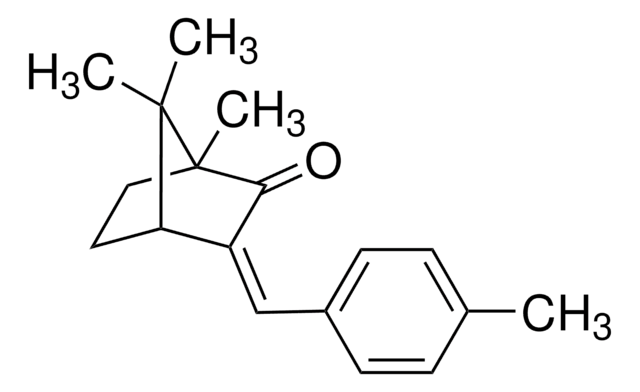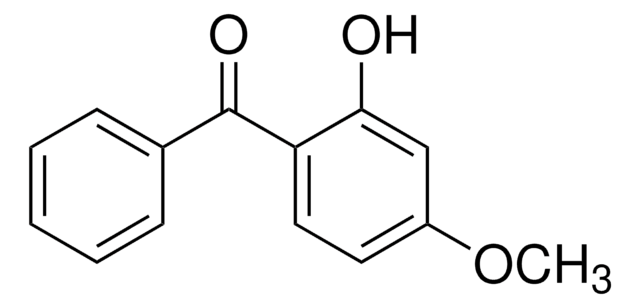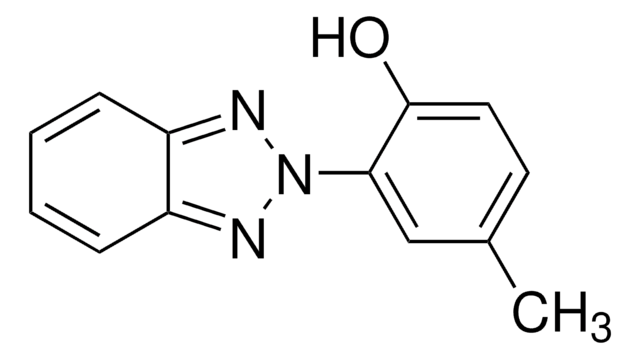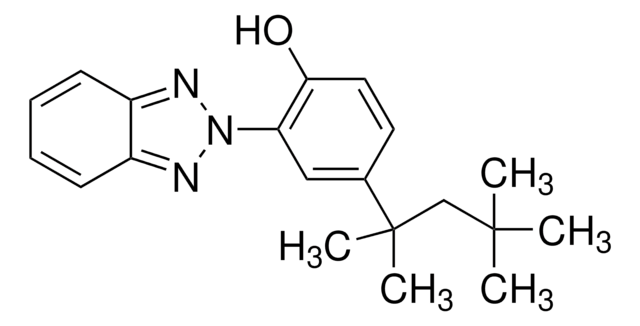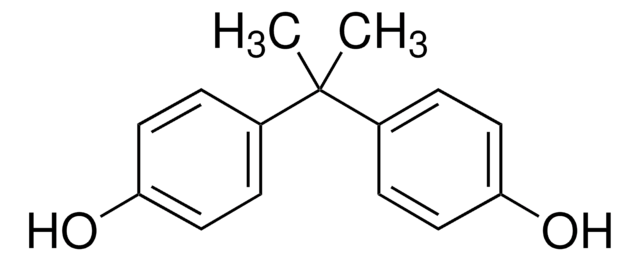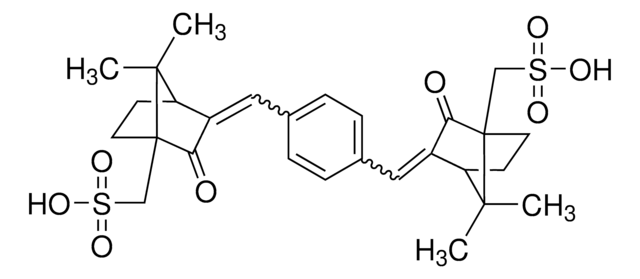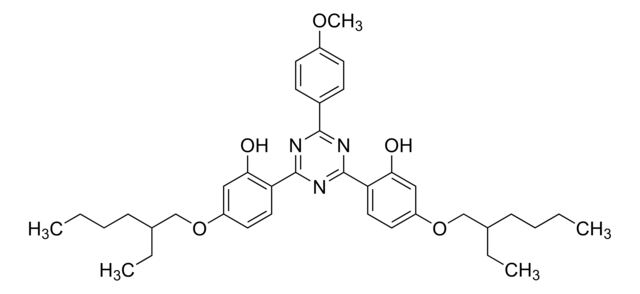91556
3-Benzylidenecamphor
analytical standard
Synonyme(s) :
1,7,7-Trimethyl-3-(phenylmethylene)bicyclo[2.2.1]heptan-2-one, 3-BC, 3-Benzylidene-1,7,7-trimethyl-norbornan-2-one, 3-Benzylidene-2-bornanone
About This Item
Produits recommandés
Qualité
analytical standard
Niveau de qualité
Essai
≥97.0% (GC)
Durée de conservation
limited shelf life, expiry date on the label
Technique(s)
HPLC: suitable
gas chromatography (GC): suitable
Application(s)
environmental
Format
neat
Chaîne SMILES
C[C@]1(C/2=O)CC[C@@H](C1(C)C)C2=C\C3=CC=CC=C3
InChI
1S/C17H20O/c1-16(2)14-9-10-17(16,3)15(18)13(14)11-12-7-5-4-6-8-12/h4-8,11,14H,9-10H2,1-3H3/b13-11-
Clé InChI
OIQXFRANQVWXJF-QBFSEMIESA-N
Application
Mention d'avertissement
Warning
Mentions de danger
Conseils de prudence
Classification des risques
Repr. 2
Code de la classe de stockage
11 - Combustible Solids
Classe de danger pour l'eau (WGK)
WGK 3
Point d'éclair (°F)
Not applicable
Point d'éclair (°C)
Not applicable
Listes réglementaires
Les listes réglementaires sont principalement fournies pour les produits chimiques. Seules des informations limitées peuvent être fournies ici pour les produits non chimiques. L'absence d'indication signifie qu'aucun des composants n'est répertorié. Il incombe à l'utilisateur de s'assurer de l'utilisation sûre et légale du produit.
EU REACH SVHC Candidate List
Faites votre choix parmi les versions les plus récentes :
Certificats d'analyse (COA)
Vous ne trouvez pas la bonne version ?
Si vous avez besoin d'une version particulière, vous pouvez rechercher un certificat spécifique par le numéro de lot.
Déjà en possession de ce produit ?
Retrouvez la documentation relative aux produits que vous avez récemment achetés dans la Bibliothèque de documents.
Les clients ont également consulté
Notre équipe de scientifiques dispose d'une expérience dans tous les secteurs de la recherche, notamment en sciences de la vie, science des matériaux, synthèse chimique, chromatographie, analyse et dans de nombreux autres domaines..
Contacter notre Service technique

